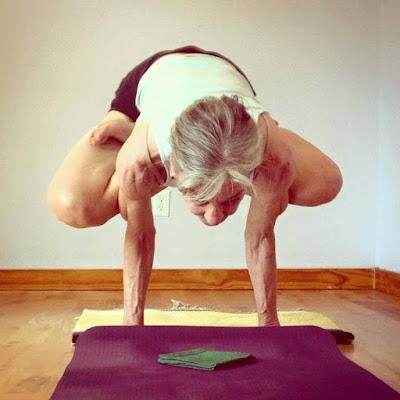Peggy Kelley, Age 67
"
So, our expectations about what is normal during aging are based on how growing older affects sedentary people. " —Gretchen Reynolds, New York Times I read that rather mind-blowing sentence in the New York Times article How exercise can keep aging muscles and immune system 'young'. I tracked down that article after Brad told me he’d read about studies showing the benefits of exercise both for muscle strength and the immune system. But can we take a moment to let it sink in only 10 percent of people past the age of 65 exercise regularly? This is really frightening to me because the more I read about age-related problems, whether physical or cognitive, the more I’m starting to think that exercise is by far the most important we can do to stay healthy physically and mentally as we age. And according to How exercise can keep aging muscles and immune system 'young' because “aging” and age-related problems are studied primarily in sedentary people, a group of British scientists at Institute of Inflammation and Aging at the University of Birmingham, who themselves exercised regularly, decided to study older people who did exercise regularly (British people who cycled recreationally). They wondered whether "our beliefs about what is normal and inevitable with physical aging might be limited or incorrect, and in particular, whether we might be ignoring the role of exercise.” The scientists started with a study An investigation into the relationship between age and physiological function in highly active older adults that looked at a group of cyclists between the ages of 55 and 79, who had been cycling for decades and still rode about 400 miles per month (and none of whom were professional athletes). The scientists assessed both the physical and cognitive abilities of the group of older cyclists as well as those of a group of sedentary older people and a second group of younger people. When they compared the results from all three groups, they learned that the cyclists had reflexes, memories, balance and metabolic profiles that “more closely resembled those of 30-year-olds than of the sedentary older group.” The results of that study were so compelling that the scientists followed up the first study with two more, one that looked at the muscles the cyclists and a second one that looked at their immune systems.
The study Properties of the vastus lateralis muscle in relation to age and physiological function in master cyclists aged 55-79 years. examined muscle biopsies taken from the legs of 90 of the riders from the original study. The scientists concluded that that their leg muscles generally maintained their size, fiber composition, and other markers of healthy muscles even as the riders had aged. And the cyclists who rode the most miles per month—regardless of age—had the healthiest muscles. As they original study said: “We conclude in this highly active cohort, selected to mitigate most of the effects of inactivity, that there is little evidence of age-related changes in the properties of VL muscle across the age range studied.” The study Major features of immunesenescence, including reduced thymic output, are ameliorated by high levels of physical activity in adulthood. compared blood taken from the riders to that taken from a group of sedentary older people as well as to a group of healthy young adults. The scientists discovered that the highly active older cyclists had almost as many new T cells in their blood as the young people! They also had high levels of the immune cells that help prevent autoimmune reactions and of a hormone that protects the thymus from shrinking. On the other hand, the sedentary older people had a much lower number of T cells and their thymus glands were atrophied. As the original study said: “The frequency of naïve T cells and recent thymic emigrants (RTE) were both higher in cyclists compared with inactive elders, and RTE frequency in cyclists was no different to young adults. Compared with their less active counterparts, the cyclists had significantly higher serum levels of the thymoprotective cytokine IL-7 and lower IL-6, which promotes thymic atrophy. Cyclists also showed additional evidence of reduced immunesenescence, namely lower Th17 polarization and higher B regulatory cell frequency than inactive elders.” According to Gretchen Reynolds, the researchers said that healthier muscles found in the first study may be related to the healthier immune systems found in the second study because muscles are one of the sources of the hormone that protects the thymus, an essential part of the immune system. The New York Times article quoted Janet Lord, the director of the Institute of Inflammation and Aging at the University of Birmingham, who was a co-author of both studies, saying, “So more muscle means more of that hormone.” Meanwhile, the takeaway of course is that the more research there is about exercise and aging the more obvious it becomes that being physically active is one of the most important things you can do for many different aspects of your physical health as well as your cognitive health. Whether you get all your exercise from a regular, very active asana practice or by combining asana with other types of exercise, being physically active as you age is a vital aspect of healthy aging. (Of course, yoga provides many other benefits for healthy aging that are not available though exercise alone, including stress management and equanimity practices.)
Subscribe to Yoga for Healthy Aging by Email ° Follow Yoga for Healthy Aging on Facebook and Twitter ° To order Yoga for Healthy Aging: A Guide to Lifelong Well-Being, go to Amazon, Shambhala, Indie Boundor your local bookstore.For information about Nina's upcoming workshops and other activities, see Nina's Workshops, Book Signings, and Books.


